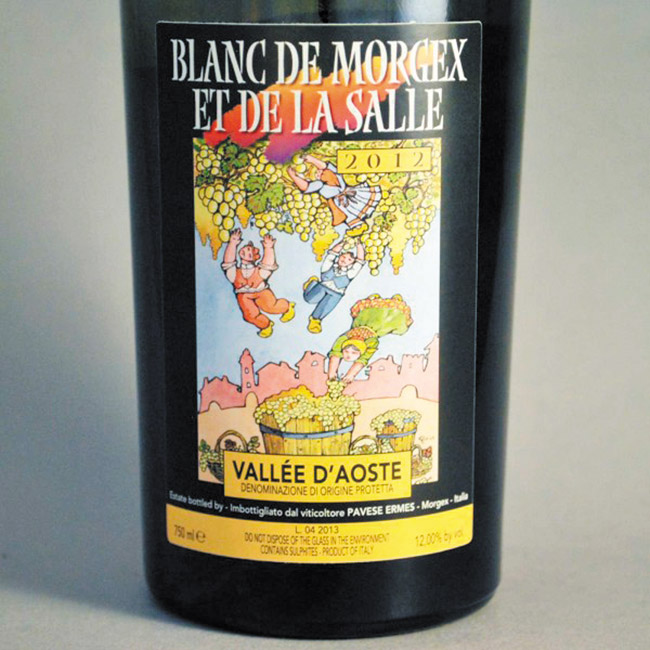Sharing A Few New Fine Wine Finds

This wine combines the power of a dry Grosses Gewachs (Grand Cru) Riesling from the Rheingau with the body of unoaked Chardonnay
PHOTO FROM ROBERTO VIERNES
I just spent three days in Portland, Ore., with some of the top wine professionals across the nation. As a member of the Court of Master Sommeliers, I was assisting in proctoring the advanced examination for 64 candidates. But outside of the examination I had the pleasure of learning so much from my fellow Masters and being inspired by their ideas, knowledge and above all passion for wine. In the process, I tasted — actually, more like drank — some wines I had never tasted before that were particularly notable.
This first wine is 2011 Monastero Suore Cistercensi “Coenobium” Bianco. This white hails from the Lazio district of Italy. As the name suggests, the estate and winery actually are run and operated by nuns of Cistercian Monastery. The grapes are grown organically, and the wine is made under the direction of Giampero Bea, one of Montefalco’s shining stars. It is a blend of three indigenous varieties: Verdicchio, Grechetto and Trebbiano Toscano.
Unlike most white-wine makers, Bea keeps these grapes in contact with their skins for an extended maceration period. Normally, white wine is made by crushing the grapes and running off the juice from the skins immediately. Bea’s unique process gives the wine a more yellow-gold hue and a unique fragrance and texture. One of my cohorts called it the white wine that acts like a red. And I can see her point. It certainly smells like a white wine, with loads of fresh and candied citrus, melons, a leesy character, dry white flower blossoms and a distinct note of junipers and marzipan. But on the palate it has more texture — almost tannic without a heavy glycerol mouth feel to it. It was magical with a plate of steak tartare. The elevated acidity totally cut through the mustard as well as the protein of the raw beef, and the tannic edge of the wine (almost unheard of in a white wine) also matched the texture of the dish. I researched the wine on the Web and found that they produce only about 12,000 bottles in any vintage at a reasonable price of around $25.
Another new find was a bottle of 2012 Ermes Pavese Blanc de Morgex et la Salle. This is another terribly esoteric wine made from a grape known as Prie Blanc in the Valle d’Aosta worth a second taste — or bottle, in our case.
This vineyard is 1,200 meters above sea level — some of the highest vineyards in all of Europe — high in the Alps not far from Mont Blanc. The vines are from pre-phylloxera stock and the wine is a unique expression of high acidity and mountain fresh air, replete with a hint of alpine herbs, yellow melons, quince and even jackfruit. The acidity would be almost too acrid and burn the palate like a focused beam of light from a magnifying glass were it not for the ample amount of fruit concentration that bolsters the wine through onto a zesty finish.
There is stoniness in the wine as well, which reminds me of stark, old mountain ranges, almost granitic in quality, something ancient. It combines the power of a dry Grosses Gewachs (Grand Cru) Riesling from the Rheingau with the body of unoaked Chardonnay. It is quite delicious and geeky enough to satisfy the most jaded palate.
This last wine is not as esoteric but something new to me. A bottle of Paul Dethune Champagne Cuvee Prestige “Princesse des Thunes” graced one of our dinner tables, and I was terribly impressed by this bottle of bubbly. Upon further inspection, it comes from 100 percent-rated Grand Cru vineyards in Ambonnay.
Half of it comes from Pinot Noir and Chardonnay for the other, but with 30 percent of the wine coming from reserves in the cellar, which gave the wine a wonderful complexity and depth.
Pierre Dethune makes the wines at the domain that carries his father’s name. This bottle was gorgeously elegant and sophisticated, full of verve and energy. The terroir of Ambonnay comes through in a mixed red berry and chalk component that is difficult to describe but evident once you taste it. It melds together with a toasted, almost brioche note on the back palate that gives the wine a full spectrum of flavors. I will be having this wine again, and I hope very soon.
Alas, these wines may prove difficult to find in Hawaii, but if you do come across these gems, you would do well to grab a bottle or two, as you may not see them again.
Roberto Viernes is a master sommelier.
rviernes@southernwine.com
Twitter: @Pinotpusher





